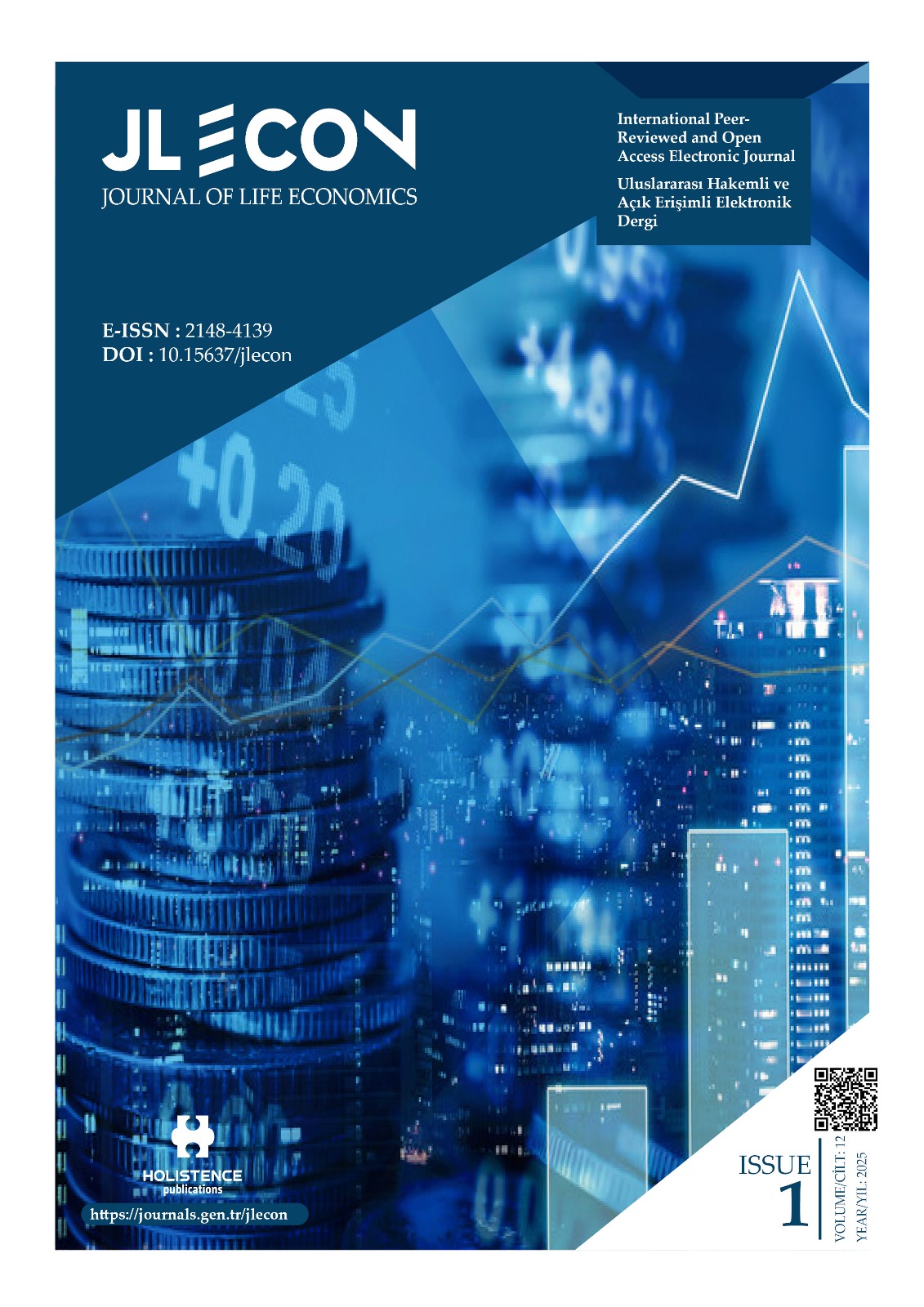Breaking the cycle: exploring the bidirectional link between loneliness and unemployment
DOI:
https://doi.org/10.15637/jlecon.2697Keywords:
Impacts of Unemployment, Social Isolation, LonelinessAbstract
This systematic literature review explored the bidirectional relation between loneliness and unemployment through a systematic analysis of job loss's economic, social, and psychological impacts. Through the synthesis of evidence from existing literature, the study demonstrates the effects of unemployment. It enhances social isolation and contributes to mental health issues like suicidal ideation, anxiety, and depression within the population. Moreover, unemployment often causes disruptions in existing routines, reducing a sense of meaning and leading to feelings of insufficiency. These disruptions can have an influence beyond the person, affecting the family and wider social circles, exacerbating the experience of loneliness.
The study also identified a vicious cycle where unemployment is a major predictor of loneliness and the negative impacts of job loss/unemployment on the victim’s self-esteem and social networks. The cycle implies that interventions must address both unemployment and its psychological consequences in a simultaneous manner in order to break the vicious circle. Furthermore, the promotion of social involvement and the facilitation of access to mental health services can significantly mitigate these negative outcomes. The findings highlight the benefits of developing and implementing tailored methodologies seeking to address the adverse effects of unemployment on the social well-being of individuals and to enhance their overall health.
Downloads
References
ALAM, M. K. (2021). A systematic qualitative case study: questions, data collection, NVivo analysis and saturation. Qualitative Research in Organizations and Management: An International Journal, 16(1), 1-31.https://doi.org/10.1007/s11135-020-01059-6
BLUSTEIN, D. L., & GUARINO, P. A. (2020). Work and unemployment during COVID-19: The existential experience of loss and fear. Journal of Humanistic Psychology, 60(5), 702-709-https://doi.org/10.1177/0022167820934229
BROUWERS, E. P. (2020). Social stigma is an underestimated contributing factor to unemployment in people with mental illness or mental health issues: position paper and future directions. BMC Psychology, 8, 1-7. https://doi.org/10.1186/s40359-020-00399-0
CAPILI, B. (2021). Cross-Sectional Studies. AJN, American Journal of Nursing, 121(10), 59–62. https://doi.org/10.1097/01.naj.0000794280.73744.fe
CHAINTRÉ, A. P., COUTURIER, Y., NGUYEN, T., & LEVASSEUR, M. (2023). Influence of Hearing Loss on Social Participation in Older Adults: Results from a Scoping Review. Research on Aging, 016402752311745-016402752311745. https://doi.org/10.1177/01640275231174561
CLAIR, R., GORDON, M., KROON, M., & REILLY, C. (2021). The effects of social isolation on well-being and life satisfaction during a pandemic. Humanities and Social Sciences Communications, 8(1).https://doi.org/10.1057/s41599-021-00710-3
EHSAN, A., KLAAS, H. S., BASTIANEN, A., & SPINI, D. (2019). Social capital and health: A systematic review of systematic reviews. SSM - Population Health, 8, 100425. https://doi.org/10.1016/j.ssmph.2019.100425
EMERSON, E., FORTUNE, N., LLEWELLYN, G., & STANCLIFFE, R. (2021). Loneliness, social support, social isolation and wellbeing among working-age adults with and without disability: Cross-sectional study. Disability and Health Journal, 14(1), 100965.https://doi.org/10.1016/j.dhjo.2020.100965
ERES, R., LIM, M. H., LANHAM, S., JILLARD, C., & BATES, G. (2021). Loneliness and emotion regulation: Implications of having a social anxiety disorder. Australian Journal of Psychology, 73(1), 46-56. https://doi.org/10.1080/00049530.2021.1904498
Geirdal, A. Ø., RUFFOLO, M., LEUNG, J., THYGESEN, H., PRICE, D., BONSAKSEN, T., & SCHOULTZ, M. (2021). Mental health, quality of life, wellbeing, loneliness, and use of social media in a time of social distancing during the COVID-19 outbreak. A cross-country comparative study. Journal of Mental Health, 30(2), 1–8. https://doi.org/10.1080/09638237.2021.1875413
GILBERT, K. L., RANSOME, Y., DEAN, L. T., DECAILLE, J., & KAWACHI, I. (2022). Social Capital, Black Social Mobility, and Health Disparities. Annual Review of Public Health, 43(1), 173–191. https://doi.org/10.1146/annurev-publhealth-052020-112623
HALONEN, I. O. (2019). Unemployed and Alone? - The Relationship between Living Alone and Social Wellbeing among Unemployed People in Finland Iiro Olavi Halonen University of Helsinki Faculty of Social Sciences Sociology. University of Helsinki Faculty of Social Sciences. https://helda.helsinki.fi/bitstreams/07c76dcf-c820-4d69-97f0-30df402854f5/download
HARDS, E., LOADES, M. E., HIGSON‐SWEENEY, N., SHAFRAN, R., SERAFIMOVA, T., BRIGDEN, A. & BORWICK, C. (2022). Loneliness and mental health in children and adolescents with pre‐existing mental health problems: A rapid systematic review. British Journal of Clinical Psychology, 61(2), 313-334. https://doi.org/10.1111/bjc.12331
JUSTESEN, T., FREYBERG, J., & SCHULTZ, A. N. Ø. (2021). Database selection and data gathering methods in systematic reviews of qualitative research regarding diabetes mellitus - an explorative study. BMC Medical Research Methodology, 21(1). https://doi.org/10.1186/s12874-021-01281-2
LEYTON, R. (n.d.). An exploratory study on psychological distress, social support, and loneliness levels among unemployed people. Retrieved August 8, 2024, from https://ir.canterbury.ac.nz/bitstream/10092/102724/1/Leyton_1995.pdf
LIM, M. H., ALLEN, K. A., FURLONG, M. J., CRAIG, H., & SMITH, D. C. (2021). Introducing a dual continuum model of belonging and loneliness. Australian Journal of Psychology, 73(1), 81-86.https://doi.org/10.1080/00049530.2021.1883411
LIM, M. H., ERES, R., & VASAN, S. (2020). Understanding loneliness in the twenty-first century: an update on correlates, risk factors, and potential solutions. Social psychiatry and psychiatric epidemiology, 55, 793-810.https://doi.org/10.1007/s00127-020-01889-7
LIU, S., HEINZEL, S., HAUCKE, M. N., & HEINZ, A. (2021). Increased psychological distress, loneliness, and unemployment in the spread of COVID-19 over six months in Germany. Medicina, 57(1), 53.https://doi.org/10.3390/medicina57010053
MORRISH, N., & MEDINA-LARA, A. (2021). Does unemployment lead to greater levels of loneliness? A systematic review. Social science & medicine, 287, 114339.https://doi.org/10.1016/j.socscimed.2021.114339
MORRISH, N., MUJICA-MOTA, R., & MEDINA-LARA, A. (2022). Understanding the effect of loneliness on unemployment: propensity score matching. BMC Public Health, 22(1), 740.https://doi.org/10.1186/s12889-022-13107-x
NEWMAN, M., & GOUGH, D. (2020). Systematic reviews in educational research: Methodology, perspectives and application. Systematic reviews in educational research: Methodology, perspectives and application, 3-22.https://library.oapen.org/bitstream/handle/20.500.12657/23142/1007012.pdf?sequenc#page=22
PAUL, K. I., & MOSER, K. (2009).
Unemployment impairs mental health: Meta-analyses. Journal of Vocational Behavior, 74(3), 264–282. https://doi.org/10.1016/j.jvb.2009.01.001
PETERIE, M., RAMIA, G., MARSTON, G., & PATULNY, R. (2019). Social isolation as stigma-management: Explaining long-term unemployed people's 'failure to network. Sociology, 53(6), 1043-1060. https://doi.org/10.1177/0038038519856813
RAIFMAN, J., ETTMAN, C. K., DEAN, L. T., ABDALLA, S. M., SKINNER, A., BARRY, C. L., & GALEA, S. (2022). Economic precarity, loneliness, and suicidal ideation during the COVID-19 pandemic. PloS one, 17(11), e0275973.https://doi.org/10.1371/journal.pone.0275973
ROBERTS, T., & KRUEGER, J. (2021). Loneliness and the emotional experience of absence. The Southern Journal of Philosophy, 59(2), 185-204.https://doi.org/10.1111/sjp.12387
RÖHR, S., WITTMANN, F., ENGEL, C., ENZENBACH, C., WITTE, A. V., VILLRINGER, A. & RIEDEL-HELLER, S. G. (2022). Social factors and the prevalence of social isolation in a population-based adult cohort. Social psychiatry and psychiatric epidemiology, 1-10.https://doi.org/10.1007/s00127-021-02174-x
RÖZER, J. J., HOFSTRA, B., BRASHEARS, M. E., & VOLKER, B. (2020). Does unemployment lead to isolation? The consequences of unemployment for social networks. Social Networks, 63, 100-111.https://doi.org/10.1016/j.socnet.2020.06.002
SMITH, K. J., & VICTOR, C. (2019). Typologies of loneliness, living alone and social isolation, and their associations with physical and mental health. Ageing & Society, 39(8), 1709-1730.https://www.cambridge.org/core/journals/ageing-and-society/article/typologies-of-loneliness-living-alone-and-social-isolation-and-their-associations-with-physical-and-mental-health/D353C1E49A62C970DDA90C313B52B6E3
STRANDH, M., HAMMARSTRÖM, A., NILSSON, K., NORDENMARK, M., & RUSSEL, H. (2014).
Unemployment, gender, and mental health: The role of the gender regime. Sociology of Health & Illness, 36(5), 710–725. https://doi.org/10.1111/1467-9566.12122
VASILEIOU, K., BARNETT, J., THORPE, S., & YOUNG, T. (2018). Characterising and Justifying Sample Size Sufficiency in interview-based studies: Systematic Analysis of Qualitative Health Research over a 15-year Period. BMC Medical Research Methodology, 18(1), 1–18. https://doi.org/10.1186/s12874-018-0594-7
WEEMS, C. F., CARRION, V. G., MCCURDY, B. H., & SCOZZAFAVA, M. D. (2020). Increased risk of suicide due to economic and social impacts of social distancing measures to address the Covid-19 pandemic: A forecast. Res Prepr, 9, 926.https://doi.www.researchgate.net/publication/340487993
Downloads
Published
How to Cite
Issue
Section
License
Copyright (c) 2025 Holistence Publications

This work is licensed under a Creative Commons Attribution 4.0 International License.
When the article is accepted for publication in the Journal of Life Economics, authors transfer all copyright in the article to the Holistence Publications.The authors reserve all proprietary right other than copyright, such as patent rights.
Everyone who is listed as an author in this article should have made a substantial, direct, intellectual contribution to the work and should take public responsibility for it.
This paper contains works that have not previously published or not under consideration for publication in other journals.

















